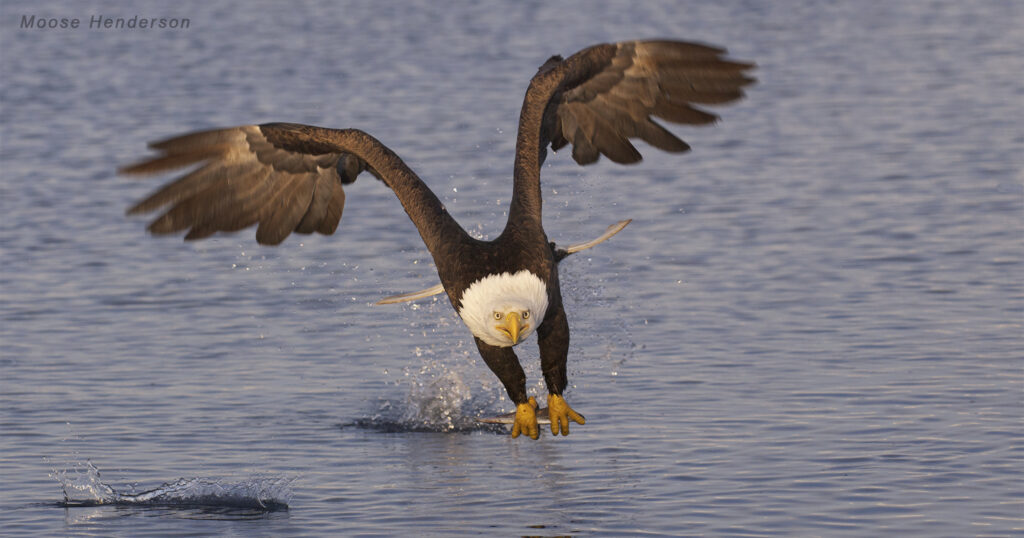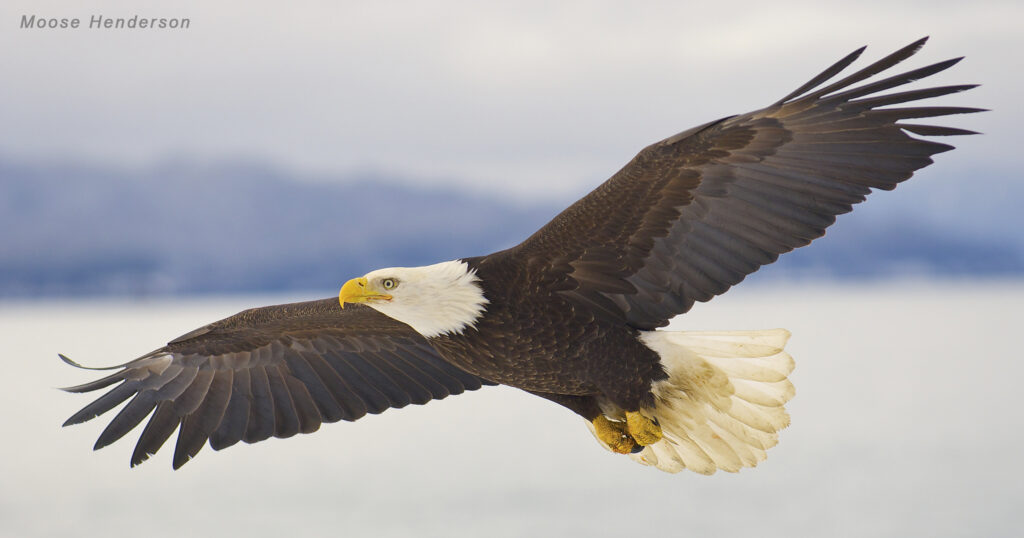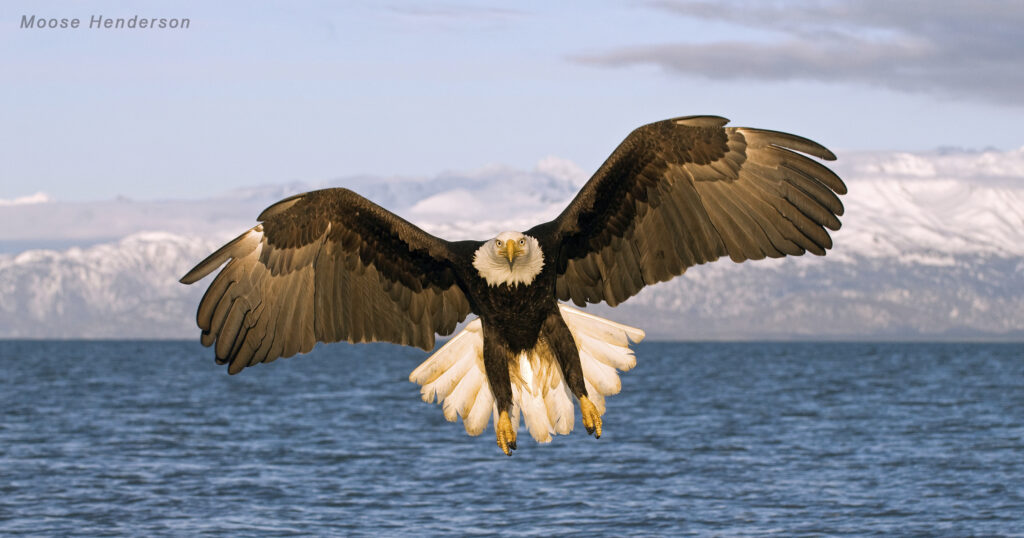
Very Important Predators
PRESENTS
The Bald Eagle
By Billy Timms
Photographs by wildlife photographer Moose Henderson of St Petersburg, FL
The bald eagle Haliaeetus leucocephalus, the only eagle to solely make North America its home, has become the iconic symbol of freedom and justice in the United States.
Easily recognized by their yellow beaks, bright white tails, and white-crowned heads, these large birds of prey remain in the North American spotlight. Though they are called “Bald” eagles, their entire head is covered with stark white feathers giving the adults that distinct “bald” look. Due to their ever-increasing popularity, some organizations have set up nest cameras enabling people throughout the world to watch these beautiful birds go about their everyday lives and raise their eaglets.
The bald eagle is a formidable apex predator with a wingspan reaching over seven feet and superior vision allowing it to spot prey from over a mile away. These opportunistic feeders rely on fish for 70-90 percent of their diet but will happily consume whatever food is most readily available and easiest to obtain. Bald eagles will sometimes follow the migratory paths of other birds, occasionally preying upon smaller birds, such as ducks and geese. This is especially true if those birds have been harmed by hunters or suffered other injuries during their travels. In some cases, bald eagles have even been seen feeding on groundhogs and other small mammals making them excellent regulators of their ecosystem.

Recognized as expert flyers, a less-known fact about bald eagles is that they are also excellent swimmers. When diving into the open water, if the fish they are attempting to capture is too heavy to enable them to take flight; they will swim to shore, fish in beak, in a way that almost perfectly matches the butterfly stroke used by swimmers.

In the mid-1900’s, following WWII, bald eagles were nearly brought to extinction by the widespread use of the insecticide DDT. In 1967, when there were roughly 400 mated pairs in North America, they were added to the list of endangered animals. Since then, their numbers have grown bringing their approximate population to 316,000 of these majestic birds in North America. Around 71,400 of them are mated pairs. This incredible population increase has resulted in their complete removal from the watchlist. As sightings of bald eagles have become more common due to their abundant numbers, they are nevertheless just as exciting a sight to behold.
The Bald Eagle
By Billy Timms
Photographs by wildlife photographer Moose Henderson of St Petersburg, FL
– – –

Our VIPs are critical for ecosystem health and stability. They are the masters of land, sea, and sky, the balancers of environments, and the most important predators on Earth.


